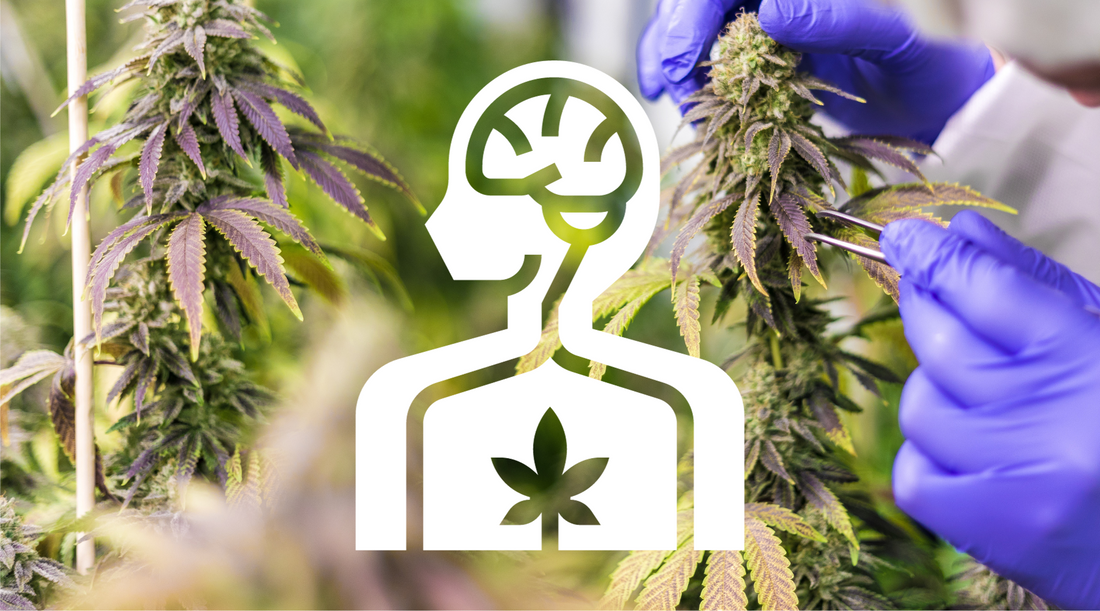The endocannabinoid system (ECS for short) is a complex network of receptors, neurotransmitters and metabolic enzymes that control almost every physiological process inside our bodies. We can think of it as our body’s air traffic control centre, mediating everything from appetite and pain, to mood and memory.
What is the Endocannabinoid System?
The ECS is now believed to have evolved almost 600 million years ago with almost every living thing having one - mammals, birds, amphibians, fish, and even sea urchins, leeches, mussels and nematodes all having one!
The ECS is made up of three main components - cannabinoid receptors, endocannabinoids and metabolic enzymes.
1. The Cannabinoid Receptors
We can find two main cannabinoid receptors within our ECS. They are the CB1 receptors mostly found in the central nervous system, and CB2 receptors, found in the peripheral nervous system and immune system.
2. The Endocannabinoids
Our bodies also produce their own cannabinoids which are called endocannabinoids (taken from the latin word “endo“ meaning "from within the body”). Endocannabinoids bridge the gap between our brains and our bodies, sending messages back and forth so our brains can make real-time adjustments to the various biological process going on in our bodies.
So far scientists have isolated two main endocannabinoids. The first, and most well-known, is anandamide, named after the Sanskrit word ananda meaning bliss. This is because anandamide regulates cognitive function, mood, fear and anxiety, and generally helping us feel good. The second is 2-AG which regulates appetite, immune system functions, and pain perception to name but a few.
3. Metabolic Enzymes
The last piece of the ECS puzzle are the metabolic enzymes. Their job is to break down any cannabinoids leftover after they’ve done their job. These metabolic enzymes are also the reason it is nigh on impossible to overdose on any cannabinoid - the metabolic enzymes simply don’t allow there to be too much of them in our bodies.
How does the Endocannabinoid System work?
All cannabinoids - whether our own or those from a plant - affect us in one way or another. This is because they can interact directly with the cannabinoid receptors in our ECS. Think of cannabinoids as keys, and the CB1 and CB2 receptors as the corresponding locks that they fit into.
When a cannabinoid interacts with a cannabinoid receptor, it essentially opens pathways that allows messages to pass from one part of the body to another. And depending on where the cannabinoid receptor is located, and the type of cannabinoid that “unlocks” it, these interactions are what drive the various effects and benefits we experience from these compounds.
This is also why different cannabinoids produce different effects, and why certain conditions tend to respond better to certain cannabinoids.
For instance, say you suffer from acute inflammation, you will probably benefit from CBD more than any other cannabinoid as it is one of the most powerful anti-inflammatory compounds found in nature. On the other hand, if you want to treat insomnia and crave some restful sleep, CBN might be a better option for you because of the sedative and hypnotic effects it has on the body.
How does CBD Oil Work With the ECS?
Remember how we said that the ECS’s metabolic enzymes break down leftover cannabinoids? And how it’s virtually impossible to overdose on cannabinoids because there’s simply not enough of them floating around? Well, the flip side of this is that sometimes it can also mean that there are too few endocannabinoids available to the ECS.
When this happens, we can suffer from clinical endocannabinoid deficiency syndrome (CECD), a state in which our ECS - and by extension our bodies - don’t function at their best, causing us to become ill.
What researchers found is that, even though the chemical structure of plant cannabinoids are quite different from our own cannabinoids, their interactions with the ECS are quite similar. This means that when we consume plant cannabinoids, it helps with counteracting CECD.
But, when it comes to CBD in particular, things get even more interesting.
Unlike cannabinoids (like THC for instance), CBD interacts differently with the ECS. If you’ve read our article Let’s talk about CBD, you will know that CBD doesn’t “unlock” our cannabinoid receptors like other cannabinoids do. Instead, it pushes the ECS to make more of it’s own endocannabinoids.
This helps the ECS return to its normal state of balance or homeostasis - a kind of “Goldilocks-zone” - where everything is just right, ultimately giving our bodies the opportunity and resources to heal itself.
Fantastic, isn’t it?

